The Killing Tour
The current craze for Scandi Crime
It’s not often
that an item of clothing becomes a TV star all by itself, but the woolly patterned jumper that diminutive police detective Sarah Lund wore in the Danish series Forbrydelsen (The Killing) has possibly eclipsed Marilyn Monroe’s billowing pleated dress as the most famous garment in modern pop culture.
The traditional knit from the Faroe islands, which are situated halfway between Norway and Iceland, became so culturally hip that actress Sophie Gråbøl, who played Lund in the 3 part series (2007-2012) made a guest appearance in it on the Absolutely Fabulous Christmas special in 2011. The Duchess of Cornwall and Helena Christensen have one, it has spawned a clever spoof on You Tube, and knockoffs were so prevalent that the original designers Gudrun & Gudrun became involved in litigation with companies selling cheap copies over the internet.
But if I wanted to buy one of the jumpers for myself I might be out of luck, according to Lisa Lotte Frederiksen, a one-woman walking encyclopaedia on The Killing, who started the Nordic Noir Tours of Copenhagen and The Killing locations, designed for fans of that series and other Scandinavian TV dramas like Borgen ( The Castle ) and Bron ( The Bridge.) ‘The designers can no longer fulfil demand,’ the former schoolteacher tells me. ‘The sweaters are being outsourced to Jordan.’
Jordan! This is more shocking to me than any twists of plot the excellent writers of The Killing have come up with. The idea of the thick snowflake design jumper being made in arid Jordan boggles the mind. (You can, however, knit yourself a Little Sarah Lund doll in her own teeny Faroese sweater from Emma Kennedy’s The Killing Handbook.)
I’ve been a fan of Scandi Crime, as the genre of Scandinavian crime fiction and TV crime drama is now known, ever since the early 1990s, when I picked up a copy of The Laughing Policeman, a riveting police procedural by Mai Sjöwall and Per Wahlöö, a husband and wife writing duo who have been credited with being the founders of modern Scandinavian literary crime. During the 1960s and 70s they wrote ten Detective Martin Beck mysteries, introducing the world-weary Swedish detective to the world long before Henning Mankell brought us Kurt Wallander and Dane Peter Høeg’s Miss Smilla’s Feeling for Snow became the first Scandi Crime international bestseller in 1992.
What appealed to me then and now is the cool precision of Scandinavian crime detection, as opposed to the shoot-em-up antics of popular American thrillers and the tidy denouements of ‘cosy’ writers such as Agatha Christie.
The explosion of interest in Scandi Crime came after 2005, when Swedish crusading journalist and human rights activist Stieg Larsson’s Millennium trilogy was published in translation around the world, starting with the first book The Girl with the Dragon Tattoo. Larsson died suddenly of a heart attack in 2004, just after delivering the three books to his publisher, and that inflamed the publicity, aided by an engrossing Swedish film (and two feature-length TV movies) and an equally excellent Hollywood version starring Daniel Craig. By December 2011, the Millennium trilogy had sold 65 million copies.
Because there were no more Stieg Larsson books to come, readers thrilled by his mix of tense psychology and lurid violence and intrigued by his insights into a corrupt Swedish political system looked elsewhere for the same fix. Henning Mankell’s gloomy and brilliantly plotted Kurt Wallander novels first appeared in English translation in 1997 and has spawned a Swedish film series, two Swedish TV series starring Krister Henrikkson and four British mini series starring Kenneth Branagh, who is a great a fan of the books. Mankell, who was married to Swedish film legend Ingmar Bergman’s daughter Eva, has now sold more than 40 million copies worldwide. [He died in 2015.]
fallible police detectives doggedly pursuing criminals across bleak landscapes with a Fatalism that reminds one of old Norse sagas.
Visit any big book chain and you’ll see that the crime shelves are overrun with works by authors with tongue-twisting names, such as Arnaldur Indridason, Jussi Adler-Olsen and Åke Edwardson. It’s easy to lose count of the number of Swedish, Danish and Norwegian crime writers now enjoying English translations – and there’s more if you extend the category to the Nordic writers from Iceland and Finland.
Some writers, such as Norwegians Jo Nesbø and Karin Fossum and Swedes Camilla Läckberg and Håkan Nesser are developing huge followings. Few of them are as good as Mankell, but they almost all write from the same point of view – their heroes are dyspeptic, fallible police detectives doggedly pursuing criminals across bleak landscapes with a Fatalism that reminds one of old Norse sagas.
What I find curious is that this grim, violent, blood-on-the-snow genre has sprung up in a part of the world long held up as a democratic paradise, which has low crime statistics, strong social safety nets and the world’s highest standard of living. Maybe it’s simply the melancholy sensibility of the writers who, after all, have to endure long winters with only occasional glimmers of daylight. ‘There’s no fun in writing about happy people,’ says Icelander Arnaldur Indridason.
Åsa Danielsson is one of the guides who escorts tourists on a walking tour of Stockholm’s bohemian Södermalm district, where Stieg Larsson’s Millennium trilogy is set. She’s one of 14 Millennium guides accredited by the Stockholm Visitors Board. At the height of The Girl with a Dragon Tattoo boom a couple of years ago, when the Daniel Craig movie was released, each guide was hosting several tours a week.
On a cold Spring day when Stockholm’s lake is still frozen-over, we are among the 25 people who have joined Åsa to visit locations mentioned in Larsson’s trilogy. Among us are fans from countries as diverse as Estonia, Ireland and Canada.
We meet outside Bellmansgatan1, a 19th Century apartment building where Larsson’s male protagonist Mikael Blomkvist ‘lives’. Åsa is a font of more trivia than you really want to know about Larsson and his characters, including the earth-shattering fact that the front door is not on the street, as Larsson wrote it, but accessed by a bridge. What is interesting to me is that all the good guys in Larsson’s three novels live in Södermalm, a regenerated working class neighbourhood, which thirty years ago was nicknamed ‘Knife Soder’ for its dangerous streets, and all the bad guys live in the wealthier districts in northern part of the city, which Larsson portrays as a hotbed of political and moral corruption.
I ask Åsa how Swedes feel about the violent, ugly, corrupt society portrayed in the books. ‘When a small country like Sweden becomes famous through books like that, everyone assumes the country is like that,’ she says disapprovingly. It’s an image that Sweden is not going to get rid of anytime soon: when the American version of Dragon Tattoo was shooting in Stockholm, the weather was so sunny, the producers hired rain machines to achieve the necessary bleakness.
But Larsson’s books do not present a troubled paradise without a basis in fact. During his life he was an outspoken crusader against sexual violence and racial discrimination (The Swedish title of Dragon Tattoo is the more explicit Men Who Hate Women) and the many death threats he received during his life from right-wing extremists most certainly influenced the dark tone of his novels. Sweden has high levels of youth and immigrant unemployment, which is putting pressure on the social welfare system and creating spikes in crime rates amongst these disenfranchised.
You don’t have to scratch the surface very deeply to uncover Scandinavia’s problems with violent crime.
Over in Denmark, Lise Lotte Frederiksen is less circumspect about the dark flipside to Hans Christian Anderson’s ‘wonderful, wonderful Copenhagen.’ The Killing tour meets every Saturday outside Vesterbro station. We walk from there to the city’s old Central Station, past hundreds of pink-cheeked, well dressed, good looking people riding bicycles through clean streets in an orderly fashion. But once we pass through the old station and onto a back street that once part of the city’s red light district, it’s a little bit like finding oneself in another children’s story – Alice Through the Looking Glass. The atmosphere turns sinister, with lurking people looking like they intended harm. The authorities blast classical music into the streets at night here to scare off congregating junkies.
It’s only a few blocks to Kødbyen, Copenhagen’s meat packing district, now, like New York’s equivalent district, converted into a precinct of upscale restaurants, bars and chocolate shops. But there’s also a methadone clinic and government-sanctioned heroin and cocaine ‘fixing room’ here. Quite a few of Copenhagen’s unfortunates linger in the doorway.
Later on, while we’re walking in the trendy district of Nørrebro, my husband gets in a tussle with a drunk skinhead who tries to steal his camera. You don’t have to scratch the surface very deeply to uncover Scandinavia’s ongoing problems with violent crime, the drug trade, people smuggling and right wing extremists – strong themes in its fiction.
‘We Danes tend to see ourselves as middle class,’ Lise Lotte explains, ‘but The Killing displays the widening gap between rich and poor.’
The 18-episode first series is set against the murky backdrop of Denmark’s political system and a brutal mayoral campaign. From a vantage point outside the forbidding redbrick school that features in the series, Lise Lotte points out the towers of the Town Hall, where much of the action is set. ‘In The Killing it’s a place of corruption, with vested interests inside. Power is not to be trusted.’ She adds that showing Denmark in this light is something new. ‘It’s so critical of us. Not all Danes like it.
Borgen (the nickname of Christianborg palace, which holds the Danish parliament) presciently follows the unexpected ascension to Prime Minister of left-wing politician, Birgitte Nyborg, played by the wonderfully named Sidse Babett Knudsen, and the erosion of her moral stance as she struggles with corruption, crime and marital crisis in an increasingly desperate attempt to hold on to power.
Women Prime Ministers and Presidents are not unknown to TV drama. Commander–in-chief starring Geena Davis (2005-6) spotlighted the kind of personal sacrifices a woman uniquely has to make when she rises to power, and this is the major theme in Borgen too. But what makes the Danish series more gripping is the forensic examination of the way political and moral corruption threads its way through contemporary society, although it is somewhat more glossy and mainstream than The Killing, its darker stablemate from the same production company, public broadcaster DR. ‘Almost touristy pictures of Copenhagen,’ sniffs Lise Lotte.
‘Female protagonists in Scandi crime are always young, but not too young, and torn between the private world and their job life,’ Lisa Lotte says. ‘It reflects a dilemma many Danish women feel.’ They’re not alone in that, but this is surprising to hear, given the generous child care provisions for working families built into the Danish social welfare system, paid for by heavy personal taxes.
When Sarah Lund arrived on our TV screens in The Killing she was a different breed of female detective, unlike the glamourpusses of CSI and other US crime series. Realistically lacking vanity, she is serious, relentless, and focussed on her job at the cost of her relationship with her young son and boyfriend, although she is not so self-destructive as the older, childless Jane Tennison, Helen Mirren’s star turn in Prime Suspect.
One of the ingredients that makes Scandi Crime so popular is its fierce, originally-drawn women.
SBS screened The Bridge in 2011, which introduced another intriguing female protagonist – offbeat Swedish police detective Saga Norén, played by Sofia Helin, who is as dogged as Sarah Lund but with the added personality kink of suffering from a form of Asperger’s syndrome, lacking the usual mechanisms of empathy and humility. (In my dreams, I imagine a series where Sarah and Saga join forces – The Killing Bridge perhaps?) A US version of The Bridge had two seasons and the British-French knock off, The Tunnel lasted for three. But neither female protagonists in the mirror programs can come close to Helin’s rivetting invention of the character. The Bridge’s final season screened in 2018 with near-perfect ending for Saga fans.
If you consider Dragon Tattoo’s female protagonist, the fierce, damaged, hellbent überhacker Lisbeth Salander, who lives on the margins, it’s apparent that one of the ingredients that makes Scandi Crime so popular is its fierce, originally-drawn women. Lisbeth is believable, despite her story being so lurid, and she’s unforgettable – kick-arse to be sure, but intriguingly nuanced with it. (Larsson said that in creating her, he imagined what kind of sociopath Astrid Lindgren’s Pippi Longstocking would be as an adult.) Neither the Swedish nor US films flinched in casting strong actresses who challenged conventional ideas of beauty and charm.
When Fox remade The Killing for American audiences, and made Sarah a blonde, the Danes were ‘a little offended,’ says Lise Lotte. ‘We were happy the English took subtitles and respected our language.’
The Bridge is probably the most violent of the TV series. Series one involves a murder in the middle of the bridge that links Sweden to Denmark. One half of the body lies on each side of the division between the two countries, making it necessary for Danish and Swedish police to collaborate. I missed the subtext when I watched it a few months before I travelled to Copenhagen and Stockholm. ‘In Scandinavia, we are not brothers and sisters,’ Lise Lott explains. ‘The Danish cop is flawed and the Swedish cop suffers from Asperger’s. She has no empathy, which is a caricature of how we see the Swedish. They see us as drinking too much.’
Lise Lotte says The Bridge is so popular that one British couple paid her handsomely to hire a car and take them on to the bridge and stop in the exact spot in the middle where the body was found. I had to admit that when I went over it earlier on a bus on my way to Malmö in Sweden, I was unreasonably excited when the bus reached midway, such is the power of that series.
Lise Lotte says the Danes are ‘very flattered’ by British interest in their crime drama, as they hold British crime in high regard. Lise Lotte frequently travels to Britain to conduct Midsummer Murders walking tours in Danish. ‘The British always say, ”You’re very inefficient in Denmark. We solve three crimes in one episode and you take a whole series to figure one crime out!”’ It’s true The Killing’s first series of 18 episodes was probably the longest and most convoluted in TV series history. (Frankly, I still haven’t worked it all out.)
Does Lise Lotte have any theory as to why Sandi Crime is so popular now? ‘It’s partly the recession,’ she says. ‘All the countries are questioning how their societies are doing.’ Dark themes obviously play into a collective international funk.
We have been accompanied on our The Killing tour by a couple from England who are so knowledgeable about every plot twist and character that they could easily conduct the tour themselves. They tell me they’ve just been to Ystad, the southern Swedish town where Henning Mankell’s Kurt Wallander novels are set and the TV series are shot. Ystad is so organised for fans of the novels and TV series that the Cineteket film museum displays Kurt Wallander props and there’s a free Wallander app that guides fans on a tour of locations through Ystad and the surrounding areas.
I curse myself that I didn’t think of visiting Ystad while I was in Sweden. There’s nothing for it, really, but get on a bus and go over that bridge again.

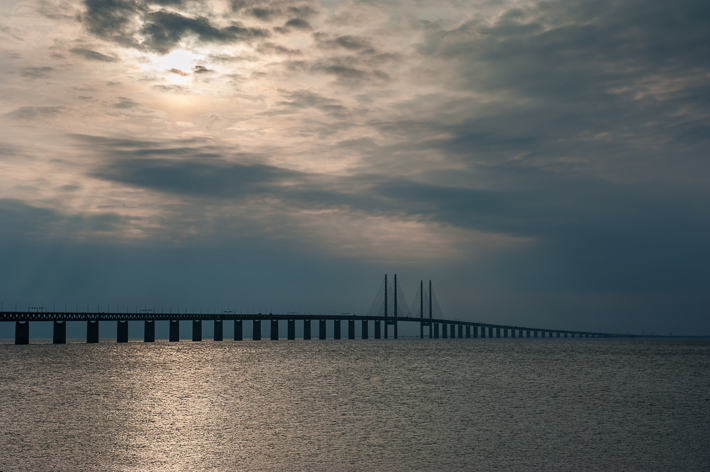
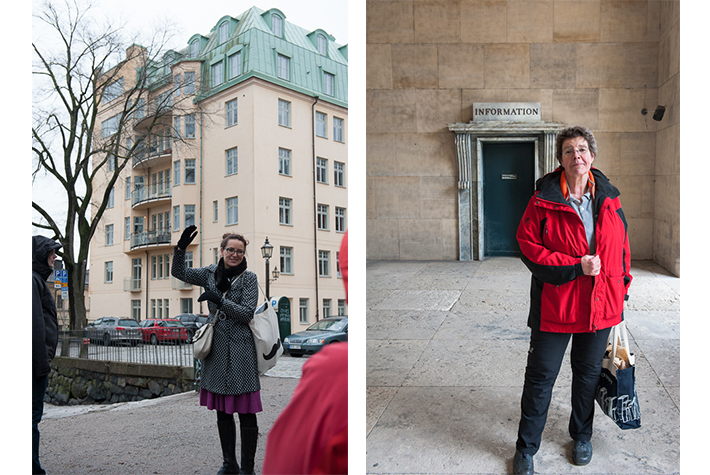
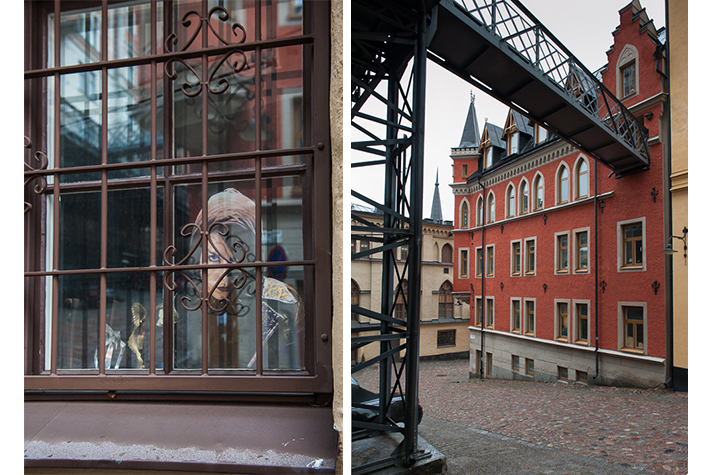
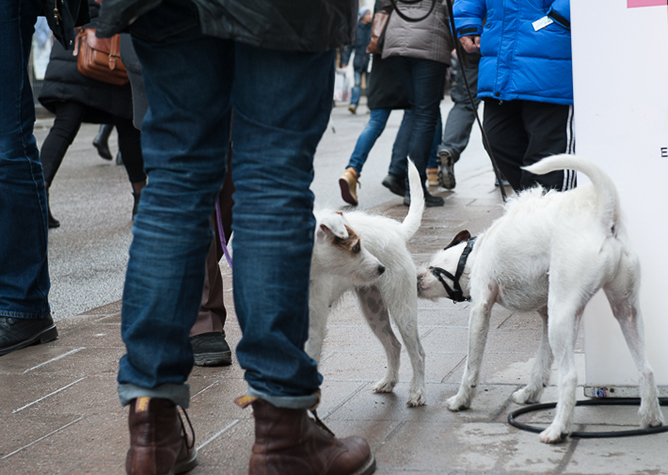
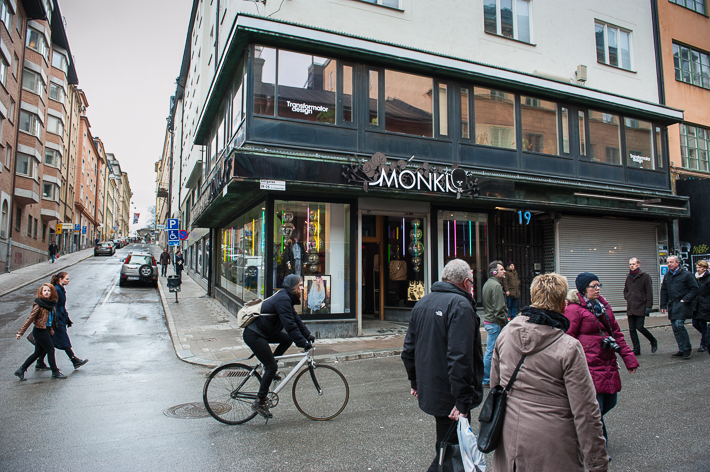
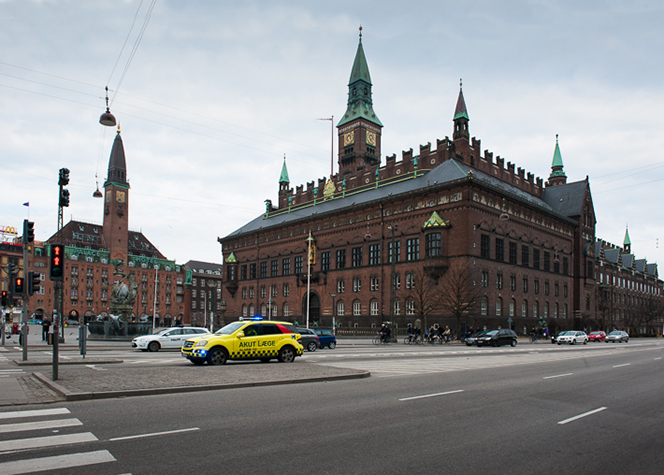
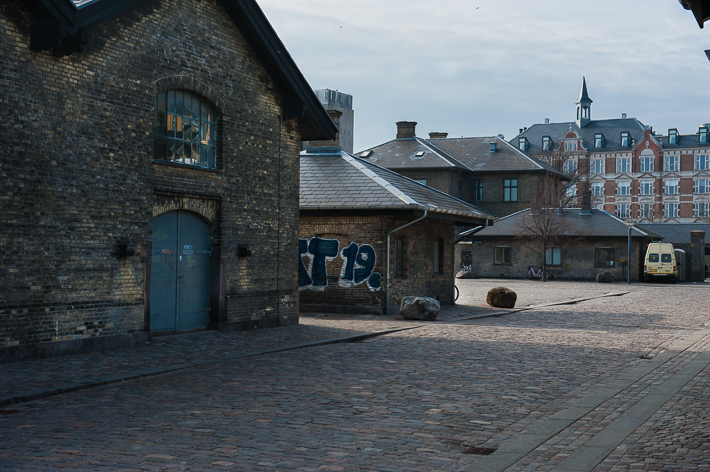
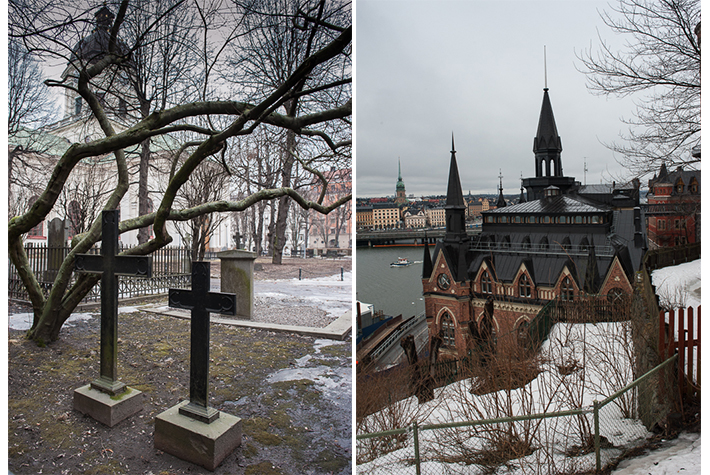

Fantastic writing. Amazing photographs.
I love your work Mr and Mrs Amos. Riveting and lyrical both.
Keep going. It is such a treat.
Thankyou
We have had a fascinating comment from the makers of Sarah Lund’s sweater, Gudrun & Gudrun of the Faroe islands. We DO support the original designers of the sweater, but perhaps our humour was lost in translation:
“I have just been made aware of the blog where our jumper from the Killing is mentioned. I am happy for the importance you give the sweater, but a bit sad to see your reaction to the fact that many Killing sweaters now are made in Jordan.
We are as a company very proud of now having about 40 knitters on the Faroe Islands, 40 in Jordan and 30 in Peru. We started the cooperation with Jordan about 7 years ago as the demand for our goods was growing and that it was difficult to get enough made on the Faroe Islands, where most women only knit for us as a second job – very much because they like to be part of the Guðrun & Guðrun story and are used to knit a lot anyway.
Before starting working with Jordan I was in contact with a Hong-Kong Chinese that offered me beautiful knitting for very little money. When I asked him how he found the knitters he proudly told me that he went to the poorest village, he blew his whistle and they came crawling. I was shocked and realized that I had to do something completely different.
As I had contacts in Jordan from my former career as EU expert stationed in Jordan, I contacted them and we had the project started. A lot of women in Jordan are not able to take normal jobs outside their homes and this was an opportunity for them to earn their money. This is a women empowerment project and we believe that women’s empowerment all starts with the opportunity to earn your own money. We have many of the same women still working for us and the former police director in Jordan – a wonderful and very strong woman called Hind – is leading the project for us.
The project in Peru is also supporting women in the slums that are not able to get normal jobs. They are very grateful that we can help them. As part of our sustainability focus we produce all the killing sweaters made in the soft alpaca version in Peru – to minimize transport as the alpaca comes from Peru.
It’s important for me to state that our cost for making a sweater on the Faroe Islands, in Jordan and in Peru is equal.
Two Faroese women started the company on tiny Faroe Islands and we have worked hard for many years to make a different living in a society where fishery is what you do. I simply just don’t understand that a lot of people – including you it seems – just tell people to copy or make their own version of the sweater instead of supporting the original designers that have been clever enough to make such an original sweater that the whole world is talking about it.”
A wonderful initiative – so please do go directly to the source if you’re interested in purchasing one.
Lee Tulloch
It was so great to hear from Gudrun about the way they are decidedly ethical in producing their work, encouraging.
Tony Amos